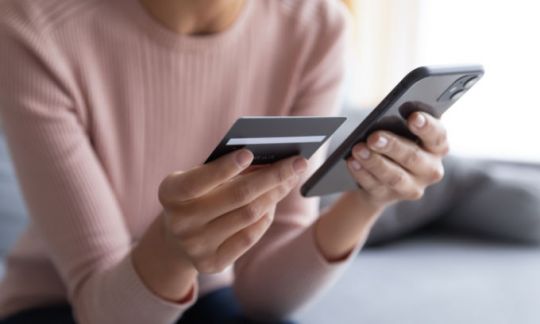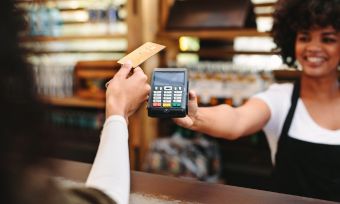How to reverse unauthorised credit card transactions
If your credit card has been used to make an unauthorised transaction, here are some steps you can take to increase your chances of having it reversed.

If your credit card has been used to make an unauthorised transaction, here are some steps you can take to increase your chances of having it reversed.
Key points:
- Double check the transaction, before taking steps to report it.
- Lock your credit card when a suspected unauthorised transaction has taken place, and keep your PIN number and password secret.
- Banks and financial institutions will generally refund an unauthorised transaction after an investigation.
After checking your bank statement there is a transaction you don’t remember making on your credit card. It could very well be an unauthorised or fraudulent transaction.
If this has happened to you, you’re not alone. According to the Australian Payments Network (APN), as online payments continue to account for a growing percentage of retail sales, credit card fraud has become more and more likely to occur online rather than in person. This means that it could potentially be harder to protect yourself against credit card fraud.
Here are steps you can take to have the fraudulent transaction reversed.
1. Double-check the transaction
Unauthorised transactions can be a payment to a person or company you aren’t familiar with, a cash withdrawal from a place you’ve never visited, a transaction on a date you didn’t use your account and/or a payment made twice.
It’s important to note that sometimes businesses will use a registered name that is different from their trading name or have their payment device registered under a different name. Before reporting a transaction as unauthorised, think about what purchases you’ve made recently and if any of them were the same value as the suspicious transaction. It may just be the case that a lender or merchant you purchased from has a different registered name than the one you associate them with.
If you don’t recognise the name on the transaction you can try searching the name online. But if nothing familiar comes up, you can also call the business you suspect the transaction to be from to confirm.
2. Lock your credit card
If a fraudster has gotten a hold of your details and made an unauthorised transaction on your credit card, there’s a chance they could keep on spending, unless you take swift action.
After discovering a transaction that you suspect to be fraudulent, you can usually temporarily lock the credit card in question. This can be done either through your bank or financial institution’s website or mobile app. Locking your card as a temporary measure can provide peace of mind while you investigate the transaction.
It’s also worth keeping in mind that if the card has been compromised by fraudulent activity, your bank or financial institution is likely to automatically cancel and replace your card. Otherwise, you are likely to be vulnerable for further unauthorised transactions.
3. Alert your bank or financial institution
Once you’ve locked your credit card to prevent any further fraudulent activity, you should contact your bank or financial institution as soon as possible to report the unauthorised transaction. There are several ways you can do this, including via phone, mobile app, email or in person at a physical branch.
It’s worthwhile to put your case in as soon as possible, ideally within 10 business days. According to the Australian Securities & Investments Commission (ASIC)’s MoneySmart website, the sooner you notify your financial institution, the more likely your case will be resolved. Your case may take longer to resolve if you report the fraudulent activity 10 business days after the transaction date.
Your bank will typically investigate the transaction, and if it’s satisfied that it’s genuinely fraudulent, it’ll reverse the transaction and refund your account where possible. Note that some transactions may take longer than others for your bank to assess. It may take up to 45 days for a card dispute to be approved or denied according to Commonwealth Bank. Once your bank has determined the outcome of their investigation, they will usually notify you by letter or email.
It’s important to note that according to MoneySmart, you are unlikely to get your money back from an unauthorised transaction if you:
- acted fraudulently yourself,
- didn’t keep your PIN or password secret,
- didn’t inform your financial institution that your card was lost or stolen or that someone else potentially knew your PIN or password in a timely manner,
- accidentally left your card in an ATM.
As well as the option of contacting your bank, Visa and Mastercard also both have their own facilities for reporting fraudulent transactions, and they can lock or cancel your card for you, as well as notify your bank or financial institution of the fraudulent activity on your behalf.
4. Check and change your online banking login details
While a criminal wouldn’t necessarily have needed to access your online or mobile banking to make fraudulent transactions on your credit card, it’s important to change your passwords and PIN just in case.
Will my bank or financial institution refund an unauthorised transaction?
Generally yes, if the bank or financial institution’s investigations reveal it to be a genuine unauthorised transaction. You’re also more likely to have an unauthorised transaction resolved when you report the fraudulent activity within 10 business days of the transaction date.
However, if you report the transaction beyond seven months after the date, the Australia Financial Complaints Authority warns that your bank or financial institution will have to obtain consent from the recipient to process the refund.
On top of the fraud protection that normally comes with Visa and Mastercard cards, your financial institution may also provide a security guarantee on your account. As long as you follow their terms and conditions – maintaining a good level of security of your banking details and reporting an incident as soon as possible – you will get a refund if the transaction is deemed to be unauthorised.
What if the transaction was a mistake, but not unauthorised?
There are some situations in which you may be able to get your money back even if you made or authorised the transaction. For example, if you incorrectly entered a BSB or account number when making a payment, you will generally be able to obtain a refund if you contact your financial institution within 10 business days and the transferred funds are still in the recipient’s account.
Generally, your financial institution can request a refund from the recipient on your behalf. But again, only if it has been seven months or more, and the recipient consents to the return of the funds.
What is fraud protection and which credit cards offer it?
Fraud protection is a feature that generally comes with all Visa and Mastercard, including low-rate and low-fee cards and premium and rewards cards, as well as some cards from other networks.
Both Visa and Mastercard have Zero Liability policies in place which protect credit card customers against unauthorised transactions and fraudulent activity. These policies generally mean customers aren’t held responsible for unauthorised transactions made using their credit card(s).
Some banks may have separate fraud prevention measures in place, such as 24/7 monitoring to help detect suspicious transactions. Consider checking what additional security is on offer from lenders if you’re comparing credit cards. Bear in mind that some security features may only be available on certain cards and for certain types of use.
Compare Low Rate Credit Cards with Canstar
The table below displays some of our referral partners’ low rate credit cards for Australians spending around $2000 per month. The results shown are sorted by highest Star Rating, then lowest purchase rate, then alphabetically by provider name. Consider the Target Market Determination (TMD) before making a purchase decision. Contact the product issuer directly for a copy of the TMD. Use Canstar’s credit cards comparison selector to view a wider range of credit cards. Canstar may earn a fee for referrals.
 24hr approval available
24hr approval available
 Apply in full online
Apply in full online
 Fraud protection
Fraud protection

0.00% p.a. interest rate on balance transfers for 24 mths. Rate reverts to 12.99% p.a. Balance transfer fee of 3% applies. Offer available until further notice. See provider website for full details. Terms and conditions apply.
 Apply in full online
Apply in full online
 Fraud protection
Fraud protection

0.00% p.a. interest rate on balance transfers for 24 mths. Rate reverts to 12.99% p.a. Balance transfer fee of 3% applies. Offer available until further notice. See provider website for full details. Terms and conditions apply.
 Apply in full online
Apply in full online
 Fraud protection
Fraud protection

Get $350 Back once you spend $1,000 or more on eligible purchases you get $50 cashback for each month for 7 consecutive statement periods. Offer available until further notice. See provider website for full details. Terms and conditions apply.
 24hr approval available
24hr approval available
 Apply in full online
Apply in full online
 Fraud protection
Fraud protection

0.00% p.a. interest rate on balance transfers for 24 mths. Rate reverts to 21.99% p.a. Balance transfer fee of 2% applies. Offer available until further notice. See provider website for full details. Terms and conditions apply.
 24hr approval available
24hr approval available
 Apply in full online
Apply in full online
 Fraud protection
Fraud protection
Canstar is an information provider and in giving you product information Canstar is not making any suggestion or recommendation about a particular credit card product. If you decide to apply for a credit card, you will deal directly with a financial institution, and not with Canstar. Rates and product information should be confirmed with the relevant financial institution. For more information, read Canstar’s Financial Services and Credit Guide (FSCG), detailed disclosure, important notes and liability disclaimer. Products displayed above that are not “Sponsored or Promoted” are sorted as referenced in the introductory text and then alphabetically by company. Canstar may receive a fee for referral of leads from these products. See How We Get Paid for further information.
Cover image source: Fizkes/Shutterstock.com

- 1. Double-check the transaction
- 2. Lock your credit card
- 3. Alert your bank or financial institution
- 4. Check and change your online banking login details
- Will my bank or financial institution refund an unauthorised transaction?
- What if the transaction was a mistake, but not unauthorised?
- What is fraud protection and which credit cards offer it?

0.00% p.a. interest rate on balance transfers for 24 mths. Rate reverts to 12.99% p.a. Balance transfer fee of 3% applies. Offer available until further notice. See provider website for full details. Terms and conditions apply.
 Travel insurance
Travel insurance
Try our Credit Cards comparison tool to instantly compare Canstar expert rated options.






